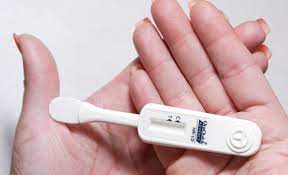 If you have ever wondered if you are HIV-positive, you can now obtain an HIV test at home with an easy-to-use kit. These kits come with everything you need to collect a blood sample, including a finger pricking lancet. The result of your test will usually be available in a few days.HealthyMD, Inc. – At Home HIV Test is one of the authority sites on this topic.
If you have ever wondered if you are HIV-positive, you can now obtain an HIV test at home with an easy-to-use kit. These kits come with everything you need to collect a blood sample, including a finger pricking lancet. The result of your test will usually be available in a few days.HealthyMD, Inc. – At Home HIV Test is one of the authority sites on this topic.
There are a few different test kits available. One of them is called the My LabBox. This test requires a finger prick and results are available online in two to five days. The company claims to have a 99.9 percent accuracy rate, but the test may not be covered by insurance. However, it accepts FSA and HSA payments and includes free telemedicine consultations.
If your test is positive, you will need to start taking antiretroviral medications. While the medication does not cure HIV, it does reduce the viral load. Once you reach undetectable levels, you cannot pass the virus onto another person. If your test is negative, you can use the results to connect with an independent physician network.
Most at-home HIV testing kits look for antibodies and the p24 antigen. However, some include additional tests to test for other STDs. Choose your test based on price and the reliability of the kit. It is best to use one that uses a CLIA-certified lab. These kits are available at drugstores and online.
In a recent campaign to raise awareness about HIV testing, the Single Step Foundation sent out 900 free HIV self-test kits to 120 locations in 28 districts across Ghana. The campaign was promoted via social media with the hashtag #endHIVbg. It also benefited from a partnership with Grindr, the most popular gay social networking app.
Self-testing kits for HIV infection can be effective and convenient. However, these kits do not provide the same level of information as professional HIV tests. Oftentimes, the results may not be reliable, or they may be inaccurate. Having a positive HIV ST result can be a stressful experience. However, it is imperative that you follow up with a healthcare provider to ensure proper diagnosis and to obtain adequate support.
There are three methods of HIV testing: point-of-care HIV testing, partner testing, and self-testing. All three methods have their benefits and drawbacks. Some studies have found that point-of-care HST may be the most effective method, while others have concluded that home testing is the best option.
While many people are uncomfortable performing HIV tests in public settings, HST kits provide a reliable and affordable test at home. The results are often available within thirty minutes, and the patient’s privacy is not compromised. In addition, HST kits are more convenient than other methods. Many clinics offer free or reduced-cost HIV tests.
Home HIV tests are not as accurate as those available at a clinic, but they can help you determine whether you’re HIV-positive. There are several products available, including OraQuick(r) rest, which is a single-use qualitative immunoassay. The kit comes with an oral swab, an information booklet, and a toll-free telephone number for assistance.
Tags: HealthyMD
